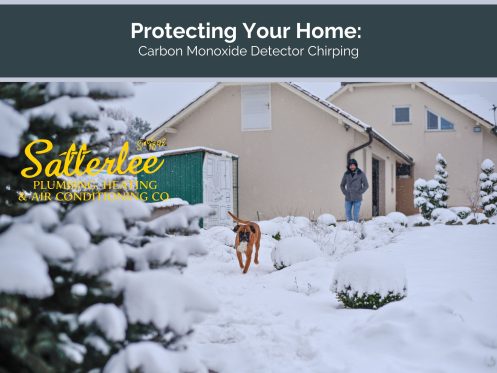Carbon monoxide (CO) is a silent, odorless threat that can have devastating consequences if left undetected. That’s why having functioning carbon monoxide detectors in your home is crucial. But what should you do if your alarm goes off? What does carbon monoxide detector chirping mean? Let’s explore the steps to take and some important information about CO detectors.
What to Do If Your Carbon Monoxide Alarm Goes Off
If your carbon monoxide detector sounds its alarm, it’s essential to take immediate action:
- Evacuate immediately: Get everyone, including pets, out of the house and into fresh air.
- Call emergency services: Once outside, call 911 to report the alarm.
- Do not re-enter: Even if the alarm stops, do not go back inside until emergency responders have checked the area and declared it safe.
- Seek medical attention: If anyone experiences symptoms like headaches, dizziness, or nausea, seek medical help immediately.
- Identify the source: Once safe, work with professionals to identify and address the CO source.
Remember, it’s always better to err on the side of caution when it comes to carbon monoxide. Never ignore an alarm, even if you feel fine.
Understanding Carbon Monoxide Detector Chirping
Carbon monoxide detectors communicate through different patterns of beeps or chirps. Here are some common examples:
Four loud beeps followed by a pause:
- This is the emergency signal indicating dangerous CO levels. Evacuate immediately.
One chirp every minute:
- This usually indicates a low battery. Replace the batteries as soon as possible.
Five chirps every minute:
- This often signals that the detector has reached the end of its life and needs replacement.
Always refer to your specific detector’s manual for exact beep patterns and their meanings.
When Your Carbon Monoxide Detector Went Off Then Stopped
If your CO alarm sounds and then stops, it doesn’t necessarily mean the danger has passed. Carbon monoxide levels may have temporarily dropped, perhaps due to increased ventilation when you opened doors or windows. However, the source of CO might still be present.
In this situation:
- Still, evacuate the premises.
- Call emergency services to inspect your home.
- Don’t return until professionals have confirmed it’s safe.
- Have your detector checked to ensure it’s functioning correctly.
How Long Do Carbon Monoxide Detectors Last?
Carbon monoxide detectors don’t last forever. Most have a lifespan of 5 to 7 years. After this time, their sensors may become less effective at detecting CO, putting you at risk.
To ensure your safety:
- Check the manufacture date on your detectors.
- Replace detectors every 5 years, even if they seem to be working.
- Test your detectors monthly by pressing the test button.
- Replace batteries annually unless you have a model with a 10-year sealed battery.
Some newer models will alert you when they’ve reached the end of their life. If you’re unsure about the age of your detector, it’s best to replace it.
Conclusion
Carbon monoxide detectors are vital for home safety, but they’re only effective if you know how to respond to their warnings and maintain them properly. By understanding what different alarm sounds mean, knowing how to react to an alarm, and keeping track of your detectors’ lifespan, you can protect your household from the dangers of carbon monoxide.
Remember, when it comes to CO safety, it’s always better to be cautious. If you have any doubts about your carbon monoxide detector or suspect a CO leak, don’t hesitate to call professionals for help. Your safety and that of your loved ones is paramount.


